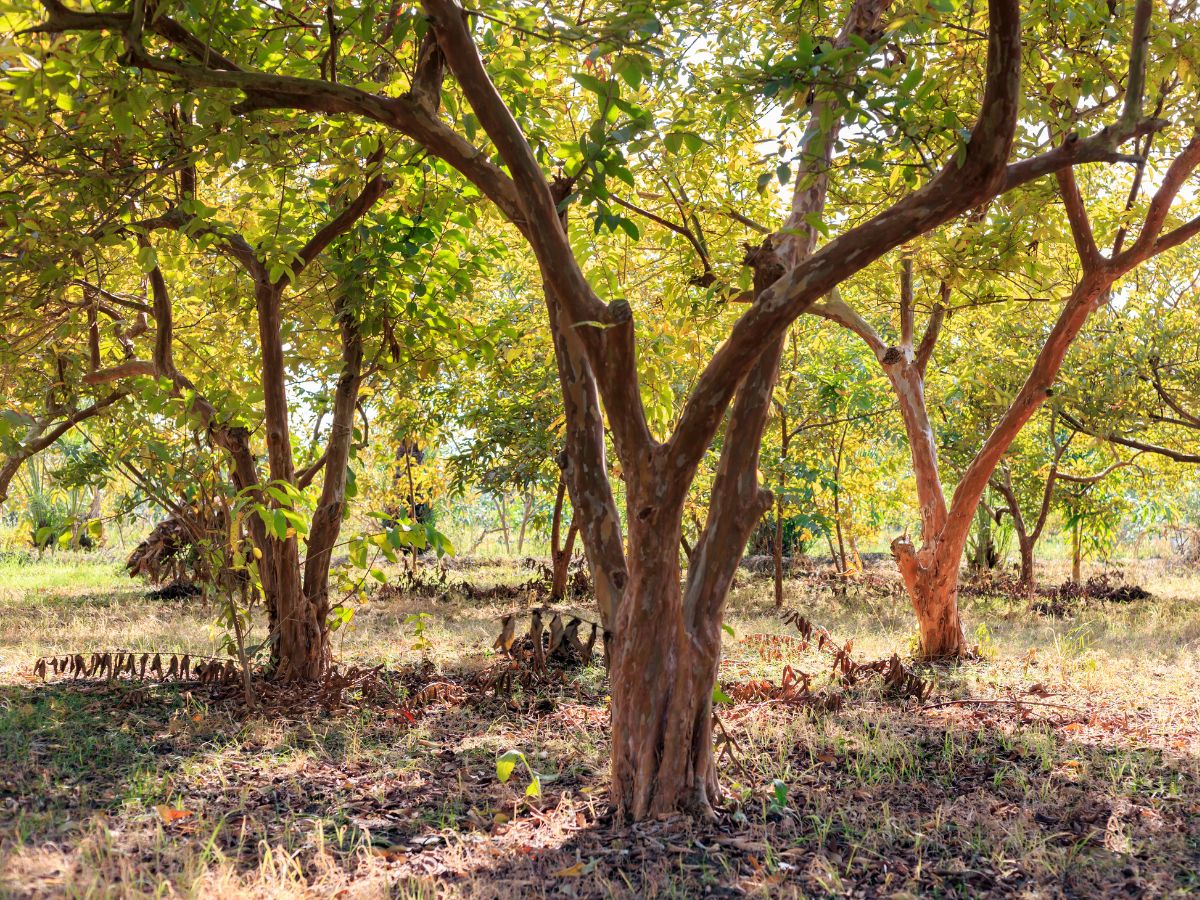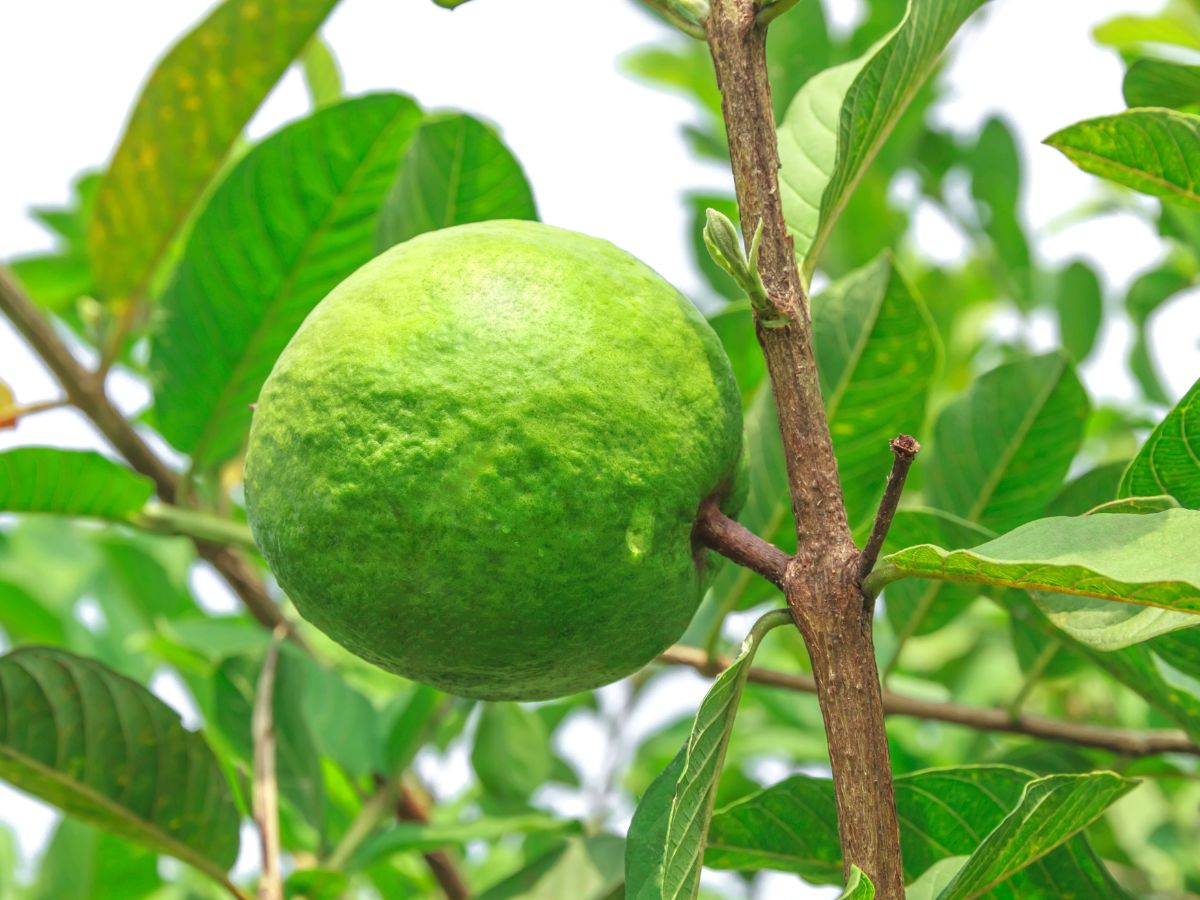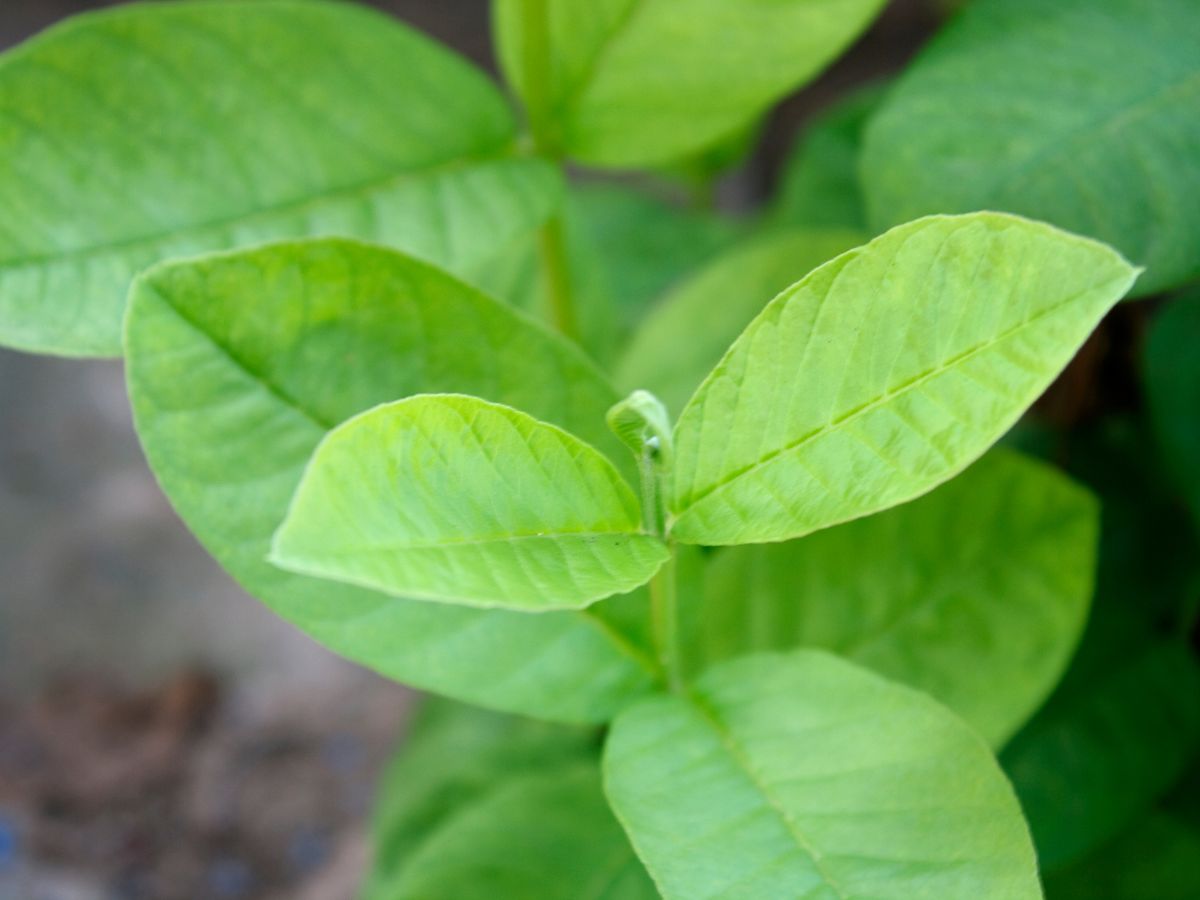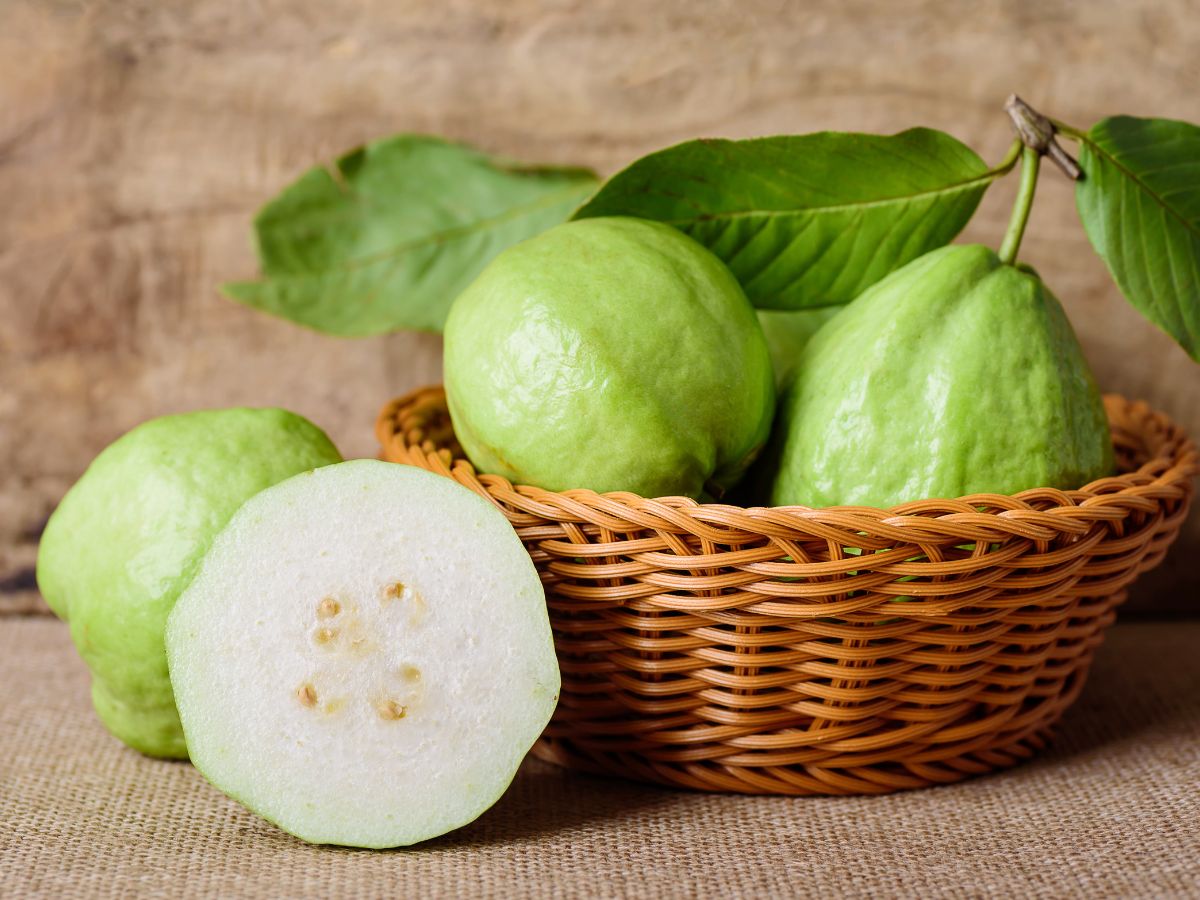Guava (Psídium) is a genus of plants belonging to the Myrtáceae family. Tropical guava, known for its fruit, grows well even at home. The fruit is exotic and versatile, and can be either consumed fresh or used in a juice.
The fruit is similar to lemon, apple, and pear at the same time. As a rule, the volume and weight are always different, and even the colors are unpredictable. The only thing that does not change is the honey-like flavor and rare health benefits, which are widely used, both among ordinary gardeners and in general medicine. Today we will tell you how to grow guava and everything about the subsequent guava tree care.
Where Do Guavas Grow
Guava is native to the tropics of South America and Mexico. Currently, guava grows in Brazil, Africa, India, Oceania, Bermuda, and Cuba.
The first guava tree information was received in 1553 from Peru, later in the 1800s, from Hawaii, where it grows almost throughout the island, even in forests at an altitude of 1200 meters above sea level.
What Does a Guava Tree Look Like

It is a shrubby evergreen tree up to 30 feet tall with smooth, reddish-brown bark. The oblong leathery leaves grow in all directions. During the flowering period, you may also notice small, white, fragrant flowers with white filamentous stamens.
What Does the Guava Fruit Look Like
Externally, the fruit is very similar to a medium-sized apple. Guava has thin, fragrant yellow or green peel. The smell of an exotic fruit can be compared to lemon. On average, the weight reaches from 3 to 5 oz. Inside the guava fruit, there is a delicate pulp, which can be of completely different colors, such as yellow, pink, white, or red. The pulp contains a large amount of hard, round seeds.
How to Care for Guava Tree
Temperature
Guava is thermophilic, which means that to grow normally it needs a temperature of 77-82 °F and at least 65 °F in winter. Older plants are able to withstand a decrease to 59°F , but not lower. At 50 °F the leaves start crumbling, and at 26°F it can die. The best option would be to keep it year-round at stable temperatures with little fluctuation.
Lighting
It is better to choose one place where the tree would be constantly grown. Windows of east, west, and south orientation are well suited for it. In the summer, it is useful for guava or psidium to spend time on the balcony or in the garden, but change the location gradually, as an abrupt change is stressful for the plant, which can result in loss of leaves.

Watering
The guava has a root system with a very large number of small roots that absorb moisture very quickly. Therefore, in the summer, the guava should be watered abundantly, at the root, with full impregnation of the soil, avoiding overdrying. In winter, watering should be reduced and only done after the soil is dry 3 inches below surface level, so as not to over-flood the plant.
Air Humidity
Guava is not capricious to air humidity, but it is necessary to regularly monitor the condition of its foliage and, if necessary, give it a refreshing shower that will remove accumulated dust from the leaves. In winter and spring, it is necessary to spray with stimulants, which would help the plant cope with short daylight hours. In spring it will start growing better.
Fertilizers
To grow guava trees faster, you can use fertilizers. Young trees should be fertilized the entire spring-summer period once a month with a complex fertilizer for potted trees. It stops in the fall, as daylight hours start to dwindle,and they should not be fertilized all winter.
Fruit guavas require organic manure-based fertilizers. To make fertilizer from manure, for each 7oz of manure pour 0.3 gallons of boiling water. Leave such fertilization for at least a day before application.
The Soil
Guava grows well in a universal substrate with the addition of perlite or vermiculite, sandy.
Plant Transplant
Young plants should be replanted in March-April. Take care not to damage the roots. Do not disturb the guava during flowering.
Guava Propagation
To preserve varietal traits in horticultural conditions, guava is propagated using cuttings, but you can also grow it from seed without any problems. It will take longer, however.

How to Grow Guava from Seeds
The guava fruit, from which seeds are taken for sowing, must be ripe, but not old. Fruits that have been lying for more than 3 months are not suitable for seed collection.
The seeds extracted from the guava must be washed, then wrapped in a wet napkin or rag, and left for 5 hours. How to plant guava seeds? After the designated time, the seeds are planted into the already wet soil, but not too deep. A greenhouse is made over the seeds and placed in a bright, warm place. Seedlings appear after 2 weeks to 3 months, depending on the freshness of the seeds. As soon as the first guava sprouts are visible, the greenhouse is removed and the cup with the sprout is placed in a well-lit area for further growth.
When do guava trees produce fruit? By growing a tree in this way, you will see the first fruits in 3-4 years.
So, we learned how to germinate guava seeds, and now let’s talk about the second breeding method.
Propagation by Cuttings
Guava reproduces well by cuttings. Cuttings must have at least 2 nodes. Before planting, they are placed in a container with a root stimulator for 12 hours, after that, they are planted in plastic cups with slightly damp soil. When planting, cuttings are deepened to the first node and a greenhouse is installed from a package, plastic bottle, or a jar. The greenhouse must be ventilated daily, giving access to fresh air. You should check the moisture content of the soil, moistening if necessary. On average, guava takes root in a month, this can be understood when the roots and new growth of leaves will be visible.
When the first signs of rooting appear, it is necessary to immediately remove the greenhouse and put the cutting in a well-lit place without drafts. At first, the soil must be kept constantly slightly moist, after which the young guava is transplanted and looked after as an adult plant.
Growing Guava Indoors
Growing indoors is not that different. Remember to water the tree regularly during the growing season, and only when the top of the soil is dry to the touch. You can feed it every 2-3 weeks with a water-soluble general-purpose fertilizer. If you want to maintain the desired shape and size, you can prune the tree in early summer. In cold seasons, watering should be reduced, and the tree should be kept in a room where the temperature is at least 50 F.
How to Eat Fruit Correctly

In general, all parts of the fruit are edible. You can eat the pulp, seeds, and even the peel. But be careful of the smaller seeds, which are hard and can damage your teeth if eaten carelessly. It is best to swallow them whole, a practice which is said to help clean the intestines.
Guava can be eaten whole or peeled and cut into wedges. Choose the method that is most convenient for you.
Frequently Asked Questions (FAQs)
What is a guava tree?
A guava tree is a small to medium-sized evergreen tree that belongs to the Myrtaceae family. It is native to tropical and subtropical regions of Central and South America, and is cultivated for its delicious and nutritious fruit.
How tall does a guava tree grow?
Guava trees can vary in size depending on the species and growing conditions. They typically grow between 10 to 30 feet in height, although some varieties can grow up to 40 feet tall.
How long does it take for a guava tree to bear fruit?
Guava trees usually start bearing fruit within 2 to 4 years after planting, although it can take longer in some cases. The time it takes for a guava tree to bear fruit depends on various factors such as the species, growing conditions, and care given to the tree.
What are the different types of guava trees?
There are several different species and varieties of guava trees, including the common guava (Psidium guajava), strawberry guava (Psidium cattleianum), pineapple guava (Feijoa sellowiana), and lemon guava (Psidium littorale). Each species has its own unique characteristics, such as fruit size, flavor, and hardiness.
Can guava trees tolerate cold weather?
While guava trees are generally tropical and subtropical plants that prefer warm temperatures, some species and varieties can tolerate mild frost and cold temperatures for short periods of time. However, prolonged exposure to cold temperatures can damage or kill the tree. It’s important to provide frost protection for young guava trees and avoid planting them in areas with severe winter frosts.
Are guava trees susceptible to pests and diseases?
Guava trees can be susceptible to pests such as fruit flies, scale insects, and mealybugs, as well as diseases such as anthracnose, wilt, and rust. Regular monitoring, good cultural practices, and timely treatment with appropriate measures can help prevent and control pest and disease issues in guava trees.
Can I grow a guava tree in a container?
Yes, guava trees can be grown in containers, especially smaller or dwarf varieties that are suitable for container gardening. However, it’s important to choose a large enough container with good drainage, use well-draining potting mix, and provide proper sunlight, watering, and fertilization to ensure the tree thrives. Container-grown guava trees may require more frequent watering and fertilizing compared to trees planted in the ground and may need to be repotted into larger containers as they grow.
How often should I water my guava tree?
Guava trees prefer consistently moist but not waterlogged soil. The frequency of watering depends on various factors such as climate, soil type, and tree size. As a general guideline, water your guava tree deeply and thoroughly about once or twice a week, allowing the top few inches of soil to dry out between waterings. Adjust the watering frequency based on the moisture level of the soil and the weather conditions.
When and how should I prune my guava tree?
Guava trees can be pruned to shape them and promote better fruiting. Prune your guava tree during the dormant season, which is usually in late winter or early spring, when the tree is not actively growing. Remove dead, diseased, or crossing branches, as well as any suckers or water sprouts. Prune to open up the canopy for better air circulation and sunlight penetration. Use sharp and clean pruning tools, and avoid heavy pruning as it may reduce fruit production.
How do I harvest guavas from my tree?
Guavas are usually harvested when they are fully ripe, as they do not ripen well off the tree. Guavas are typically harvested when the skin turns slightly soft and the fruit develops a sweet aroma. You can gently twist or cut the guavas from the tree, taking care not to damage the branches or the fruit. Guavas can be stored at room temperature for a few days or refrigerated for longer storage.
Conclusion
Guava trees are tropical fruit trees that are known for their delicious fruit and beautiful appearance. They can be grown in various climates and are relatively low-maintenance, making them a popular choice for home gardens. Whether you’re planting guava trees in your backyard, in a container, or from seeds, it’s important to provide them with the right care, including proper sunlight, watering, fertilization, and pruning.
As we can see, guava is a bit of a capricious tree. Perhaps the main thing to remember is to avoid cold and drafts, as this will negatively affect its growth. If you follow all the above instructions, you can easily grow a beautiful and healthy tree. With proper attention and care, your guava tree can thrive and provide you with an abundance of delicious guavas for years to come. Happy gardening!


